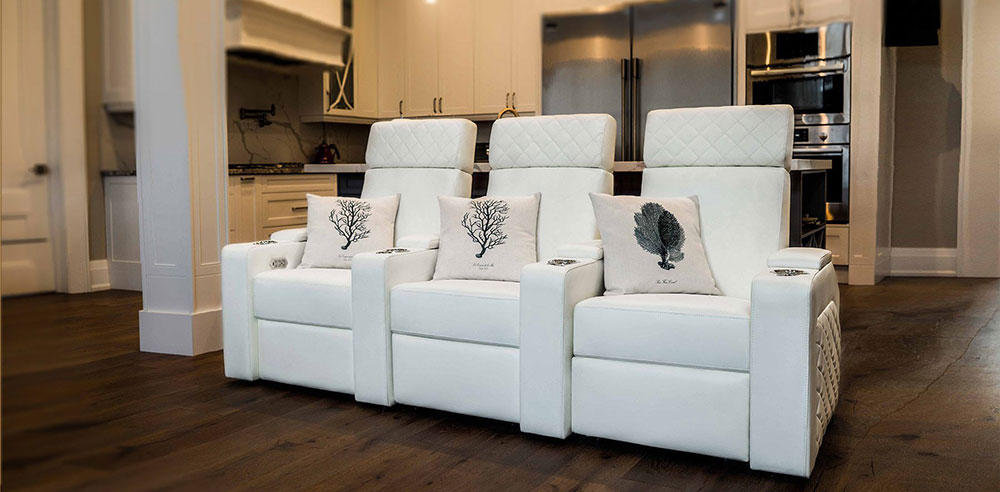What are some common home theater seat layouts?

The initial blueprint that should be chalked out firstly while finalizing a home theater design is determining the seat type and the number of seats to be placed. This is probably very surprising to several enthusiasts because most of them hold the perception that equipment is probably the most crucial thing to be chosen. The seating choices usually end up dictating several other things that include acoustic treatment, room dimensions, placement of speaker type/sub-woofer etc.
Here are a few of the most common layouts of home theater seating:
Primary seats versus secondary seats
While determining the number of seats that are required in your home theater, it is imperative to consider a “normal” way in which the theater would be used. Many individuals design their theaters keeping in mind the extreme usage cases like once to be used kid’s birthday party or for a Super Bowl gathering. In the majority of cases, however, the theater is mostly used by you and all of your close family members.
One of the top preferences when it comes to home theater design is having great sound and a high quality screen, like the EluneVision Reference EVO 8K NanoEdge. But you’ve still got to find the right layout for your home theater furniture to fully take advantage of that luxury audiovisual tech.
By adopting the concept of primary versus secondary seats, you can considerably lower the cost of setup. For example, if you want to place 12 seats in your home theater seating, then you must have arrived at the number keeping in mind the maximum number of people who might use the home theater at a time. The reality is that there are only four members in your family and 95% of the time this is just the family who would be using the home theater together. So, a better and cost-effective approach is to design for 4 good seats. Apart from that, you can end up placing 8 more recliners and also a bar area. Alternatively, you can opt for a few large bean bags and also couches for your kids to party. Considering this primary seat versus secondary seat can be interesting as well as a cost-effective option for you.
Seating placement consideration based on performance
There are several types of performance-related home theatre design principles which must be considered while laying out the ideal home theatre seating:
- The viewing angles from every movie seat should necessarily be between 36 and 50 degrees, which helps the display to fill in the field of vision of the viewers. Curved rows of theater seating are great for optimizing viewing angles.
- All the seats should necessarily have a clear view of the home theatre screen. Home theater risers (terminology for raised seating platform) should be necessarily used for bringing the eyes of the viewers seating in the second and third rows above the heads of the viewers in the first row. Elevated back rows of seating ensure there’s no peeking around the head of someone in front of you in order to see.
- The bass response for each and every listener in the room should be absolutely similar. The home theater seating should be designed accordingly. One way you can accomplish this is with bass shaker seats. But you’ve also got to consider acoustics of the room and how they interact with the seating.
Considerations for practical seating placement
The practical seating placement considerations ensure that your available space for home theater seating is optimally used. Don’t fail to think about these necessary empty spaces or you’ll end up with too much media room furniture for the space.
- Leaving 30 inches plus space for the walkways is to be necessarily adhered to for entry and exit to the theater room.
- Leaving 20 inches plus space between the walkways is necessary so that there is no inconvenience caused even when the recliners remain in the reclined position.
So, after deciding on your preference, the number of users and the space availability, you may consider and finalize the layout of the home theater seating at your home. If you are unsure about your planning, you can always opt for professional consultation for the best outcome.
